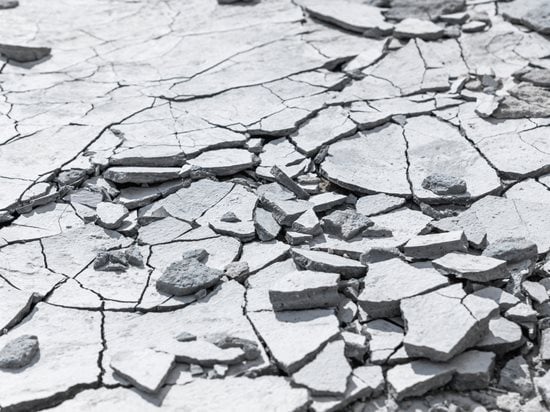- Staining Concrete
- Stamped Concrete
- Concrete Overlays
- Concrete Resurfacing
- Concrete Polishing
- Concrete Dyes
- Colored Concrete
- Indoor Concrete
- Concrete Floors
- Concrete Countertops
- Garage Floor Coatings
- Furniture, Sinks, Fire Bowls
- Basement Floors
- Outdoor Concrete
- Concrete Patios
- Concrete Driveways
- Concrete Pool Decks
- Outdoor Kitchens & Counters
- Outdoor Fireplace
- Concrete Walkways
- Concrete Pavers
- Concrete Walls
- Repair & Maintenance
- Foundation Repair
- Concrete Crack Repair
- Concrete Sealers
- Building with Concrete
- Concrete Homes
- Concrete Basements
- Decorative Concrete
- Fire Resistant
How Long Will Your Concrete Last?
What is the average lifespan of residential decorative concrete? Learn the factors that impact the longevity and durability of concrete over time and get tips for making your concrete last longer.Concrete has long been considered one of the world’s most durable materials. In fact, there are ancient Roman buildings made of concrete that are still standing, such as the Pantheon (built around 125 AD) and the Colosseum (completed in 80 AD).
Most of the concrete installed today is unlikely to have such longevity, especially for the typical residential project, but you can still expect your concrete to last and perform well for many decades if it’s properly mixed, installed, and maintained (see table).
| TYPE OF CONCRETE | EXPECTED LIFESPAN |
|---|---|
| Concrete patio | 30+ years (see Deck vs. Patio) |
| Concrete driveway | 40+ years (see Asphalt vs. Concrete Driveway) |
| Stamped concrete | 30+ years, when properly maintained (see Stamped Concrete vs. Pavers) |
| Interior concrete floor | Indefinitely, when properly installed and sealed (see Residential Concrete Floors) |
| Concrete sidewalk | 20 to 40 years (see How to Build Concrete Sidewalks) |
So what are the greatest influences on concrete's lifespan? What can you do to extend the service life of your own decorative concrete patio, driveway or floor slab? Read on to learn more about the key factors that can impact the longevity of your concrete.
Concrete Mix Design
Using the right proportion of concrete mix materials can improve concrete strength, long-term durability, density, appearance, and weather resistance. However, the mix should be specifically designed by your ready-mix supplier to suit the application and exposure conditions. For example, a concrete driveway exposed to freeze-thaw conditions will have a significantly longer lifespan if the mix is air entrained for improved resistance to frost-related damage.
Weather Conditions
Another major factor in determining the lifespan of concrete are the environmental conditions. A concrete floor inside a home or building is likely to last decades longer than a sidewalk or driveway exposed to the elements. If you live in an area that experiences harsh winters, the lifespan of your exterior concrete may be significantly less than that of concrete in a more temperate climate, unless you take measures to protect it from damage (see Six Tips for Winterizing Exterior Concrete).
Subgrade Preparation
One of the most common reasons residential concrete slabs on grade fail prematurely is improper subgrade preparation. A solid base of compacted gravel or crushed stone is needed to provide uniform support and prevent erosion, cracking, and slab settlement. In general, the thicker the subbase, the more weight the slab can support. If the concrete slab will be subject to heavy loads, such as car or truck traffic, your concrete contractor may recommend increasing the subbase thickness to extend the slab’s service life.
Learn more: Subgrades and Subbases for Concrete Slabs
Concrete Compressive Strength
The compressive strength of concrete, measured in pounds per square inch, is a good indicator of how well a concrete slab will bear up under heavy loads and impact. Generally the higher the psi rating, the stronger and more durable the concrete will be.
Although the minimum compressive strength requirements for residential concrete are often set by local building codes, most exterior concrete flatwork should have a strength range between 3000 to 4000 psi for long-lasting performance and durability.
Learn more: Understanding Concrete Compressive Strength.
Concrete Reinforcement
Reinforcing a concrete slab with steel rebar or welded wire mesh provides many benefits by helping it withstand tension forces caused by subgrade settlement, heavy loads, drying shrinkage, and thermal expansion and contraction. With the right reinforcement, even if cracking does occur, the width and severity will be limited.
Although steel reinforcement is unnecessary for all residential concrete, it’s essential for driveway slabs expected to support heavy vehicle traffic. Reinforced concrete often costs more to install, but the payoff is more durable concrete with a longer lifespan (see A Guide to Reinforcing Concrete Slabs).
Proper Curing
Properly curing freshly placed concrete improves its durability and wear resistance by retaining moisture in the slab so that the concrete continues to hydrate and gain strength. In fact, concrete that is moist cured for 7 days is about 50% stronger than uncured concrete (see Guide to Curing Times and Methods).
A number of different curing methods can be used to keep moisture in the concrete and prevent water from evaporating from the surface too quickly, including covering the concrete with wet curing blankets, continuous sprinkling with water, and the application of a membrane-forming curing compound. Although the recommended curing period for a concrete slab is about 28 days, your concrete will continue to grow stronger as time goes on.
Sealing and Maintenance
If you want your concrete to last for decades, you will need to seal and maintain it on a regular basis. Pressure washing your concrete and applying a a high-quality sealer every few years can benefit all types of concrete flatwork by blocking moisture penetration and limiting damage caused by freeze-thaw cycles and deicing chemicals. In the case of stamped and colored concrete, applying a fresh coat of sealer will also restore the concrete to its original luster and help protect the surface from abrasion and wear (see The Best Sealers for Stamped Concrete).
RELATED:
What is Concrete Made Of?





